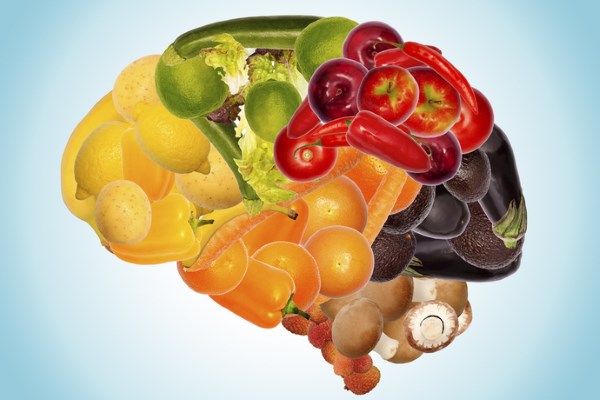How to go back to eating with presence and awareness, through a 9-point exercise that will make us rediscover the importance of food
Don't store avocado like this: it's dangerousEverything pushes us to "bite into life": which basically means biting it, catching it while it is passing, at speed.
It is an act of power and at the same time of predation for a satisfaction, a triumphant and pompous taste for achievement and performance. In much the same way, we often approach food: we bite it, rather than chew it slowly and gradually. We swallow it, rather than savor it in mouthfuls to swallow.
If well served, we can appreciate the aesthetics for a second; the perfume stimulates the desire, and then we dive into the usual way of taking it. We eat perhaps out of appetite (almost never out of real hunger), out of habit, out of compensation (for shortcomings, affections, tensions, dissatisfactions; to satisfy a pleasure or drown a displeasure): a functional activity, more or less mechanical, of nutrient supply. The Slow Food vision is often relegated to free time, a cuddle for connoisseurs.
What we put on the plate: it is only an object, not a "subject" with which to enter into a relationship in itself. Once, however, it was done: maybe it was just a little dwelling on that content, before starting to eat. Or it became a prayer, a thank you.
Because that food - the origin of which was known (it came from one's own garden or that of the neighbor, from the mill that gathered the great ones of the territory, from the nearby river) - was not taken for granted; its history was known and carried the meaning and the intrinsic link with the Earth, the cycle of transformation and life. What was on the plate had a profound value as well as a nutritional, energetic, different quality.
But nothing prevents us from returning to good, old but - more than anything else - healthy habits (for the body, for the heart and for the soul). Or, to put it in a modern way, we can choose to "eat mindfulness". Without haste, taking the right time, in the conscious presence of the here and now: it is a question of “being”, entirely, with what is on the plate. Everything.
And to see, observe, feel, think, simply by listening, noticing what emerges within you, in this first phase. And to thank, to honor what has been made a gift for us. And then, again, feeling, thinking, smelling, listening, noticing, tasting, pausing in the sensation while the food arrives in the mouth, and then is chewed and then, again, in listening to the sensation it produces as it slides down, towards the second and deeper digestion. What is becoming nourishment for us.

Those who are not sure how to start can take advantage of "Mindful eating": Just released for the types by Enrico Damiani Editore, it is a book that invites you to rediscover a" healthy and joyful relationship with food "(worth mentioning: an entire chapter on mindful eating with children and, attached, 75 minutes of guided meditations). The most obvious benefits of practical application: attunement to one's internal wisdom to know what and how much to eat (no more, no less); ability to feel what foods the body asks for, from time to time; the possibility of getting up from the table satisfied, having tasted food with all the senses and without more or less latent conflicts.
The invitation formulated by Jan Chozen Bays, author of the book, is to satisfy our every hunger. You have identified 9.
Here is an exercise to get to know them better (to do this you can use, for example, a fruit):
- Starvation of the eyes - Observe the color, shape, type of surface. Now rate your eye hunger: on a scale of 0 to 10 how hungry are you for this item, based on what your eyes see?
- Hunger for touch - Take the food you have chosen between your fingers. What do you hear? Is it smooth, slimy, sticky? Hard or soft? Based on touch, on a scale of 0 to 10 how hungry does it go?
- Hunger of the ears - Bring the food close to your ear. Does it have a sound? Does it make any noise if you hold it? Based on the sound it makes or doesn't make, how hungry are you now on a scale of 0 to 10?
- Hunger of the nose - Smell the food, then take it away from your nose for a moment and then smell it again. Smelling it, do you always think it's edible or not? Evaluate the hunger of the nose. On a scale of 0 to 10, how hungry are you for this object, based on the smell you perceived with your nose?
- Hunger of the mouth - Put the object in your mouth, but don't chew it. Turn it around in your mouth and explore it with your tongue. What do you notice? Now take a single bite, just one! And then turn it back in your mouth and explore it again with your tongue. On a scale of 0 to 10, how hungry are you now based on what you felt and tasted with your mouth? In other words, how much does your mouth want to repeat this experience? Now you can eat this whole food: chew it slowly and notice how its taste and texture changes. Now you can swallow it. Look for a few small pieces left in your mouth. What's your tongue doing now that you're done eating it? How long does the flavor stay in the mouth?
- Stomach hunger - Now bring your attention to your stomach: is it full or not, is it satisfied or not? On a scale of 0 to 10, rate stomach hunger. In other words, how much more does your stomach want of this food?
- Cell hunger - Become aware of the food that has entered your body. Absorption begins the moment we start chewing. Are there any sensations that tell you that your body is absorbing this food? How are the body's cells receiving it? On a scale of 0 to 10, your cells still want this food and how much?
- Hunger of the mind - Can you notice what your mind is telling you about this food? Evaluate the hunger of the mind. On a scale of 0 to 10, does your mind still want more of this food?
- Hunger of the heart - Is your heart telling you something about this food? On a scale of 0 to 10, how reassuring or comforting is this food? Does your heart want more?
The exercise can be done with an apple, a piece of bread or a square of chocolate or even with something liquid, such as a fruit juice (the steps will always be the same, through the nine types of hunger) ...
Mindfulness advice aside, and health and wellness goals achieved (with practice), will in any case remain a new way of relating: which slowly could bring back the desire to give thanks, for that food. Which could make us remember that the nutrients then become our body; so choosing a food carefully will become not only a healthy habit but something important, on a broader level.
Its history and its symbolism, the way it was cultivated, how much respect was put in its times of growth, in the care of the land, in the ethics of the choices that its production required, its cruelty free origin they will concern more closely: because they are a part of the implicit information, of the invisible nourishment that we will draw on and of which we will be aware.
Eating, then, will be quite different. Nutritious, more nutrients; satisfying any hunger. A "good" appetite that tunes to the melodies of the Earth, and is part of it. A way to honor everything that has been given to us as a gift.


























